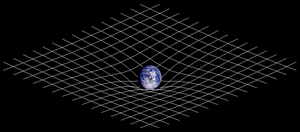 Image via Wikipedia
Image via Wikipedia
As an instructional designer, I see so many intersections between what a Connectivist classroom would look like and a Constructivist one. Constructivism calls for the elimination of a standardized curriculum. A Constructivist curriculum is customized to the students’ prior knowledge and provides opportunities for students to discuss new knowledge and frame it to their own experiences.
In the same way, I envision a Connectivist learning theory (actual content may vary from illustration on the box and contents may have settled during shipping), in Constructivist classrooms, instructors facilitate connections between information and ideas and foster new understanding in students. This is a student-centered environment where instructors shape their teaching strategies to student responses. Constructivist teaching encourages students to critically analyze, interpret, and predict information. Teachers also rely on open-ended questions, collaborative learning, problem-based learning, and promote student-student interaction. This is exactly what happens in the Connectivist classroom as I understand it.
Constructivism has little room for grades and "standardized" tests. In Constructivism, the learning process is the assessment. Students play a significant role in assessing their learning through reflective assignments, peer review, and self-evaluation. This is often through projects and portfolios which measure a student's progress over time. Projects can also measure, interestingly enough, a student's ability to build a smart network. Portfolios are seen as a greater measure of a student's skill and abilities than a single examination because portfolios tell us where a student has come from and where they are going. How long do students retain information from a test? (That is another post.)
So Connectivism does a little bit of all of this but the real jumping off point is in collaborative work. Students take control not only of their own learning but of the curriculum as well. As an instructional designer, I have to build assignments that encourage, facilitate, enable and empower students to work together and build connections. The students need the critical thinking skills not only to evaluate what they are seeing online, but to know what connections are worth making - they need critical network evaluation skills. Not all networks are created equal. Siemens and Downes are right when they say that there is learning in networks. There is a lot of stupidity too because the networks are made up of people. There is nothing inherently clever about a network. The students need new skills that ask:
- who should I be connecting to?
- what makes an "intelligent network"?
- how do I make useful connections?
- is this connection worth making?
- is this network worth keeping?
- how do I know when my networks are working for me?
This is different from Constructivism in that even more power is put into the hands of the learner, not by the teacher, but by the networks themselves. Students who are connected in the right way will often solve problems for teachers such as, learning how to broadcast a workshop into Second Life and pull in more people, or those moments when a student is able to introduce a source or expert in the field that the instructor has not met before. Connectivism takes the faith in the students' ability to learn to a whole new level and moves it to the networks' ability to teach as well. As an instructional designer, this is very exciting - curriculum becomes a handbook for cells and learning nodes - like Maoists or AA meetings.
An ironic note to all of this is that Constructivism is still seen in many places as a revolutionary act. Taking the sage off the stage and turning him/her into the guide on the side (as cliche as that is) has not happened in most classrooms. Student-centered learning is seen as a great threat to certain kinds of teachers. It is a shame because never before have we had a greater array of tools available to us to take advantage of the network-building skills that students are already using.
![Reblog this post [with Zemanta]](http://img.zemanta.com/reblog_e.png?x-id=59b967ea-40c0-4b81-8b89-53ba08f9db1a)
No comments:
Post a Comment